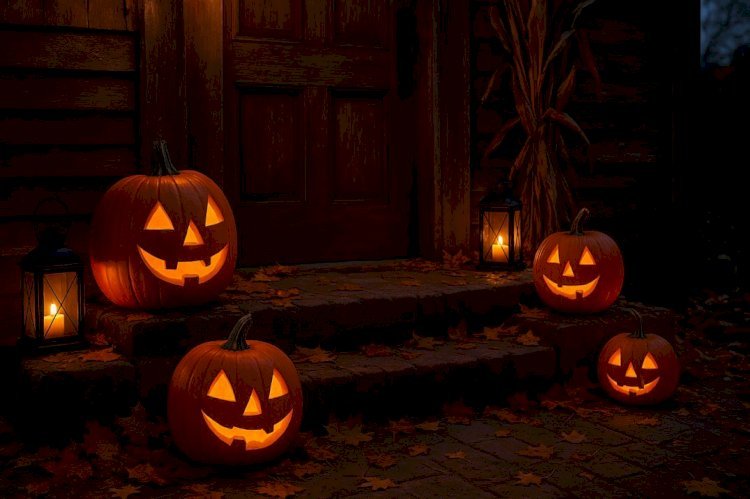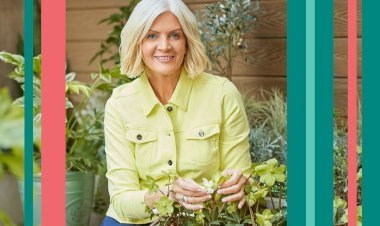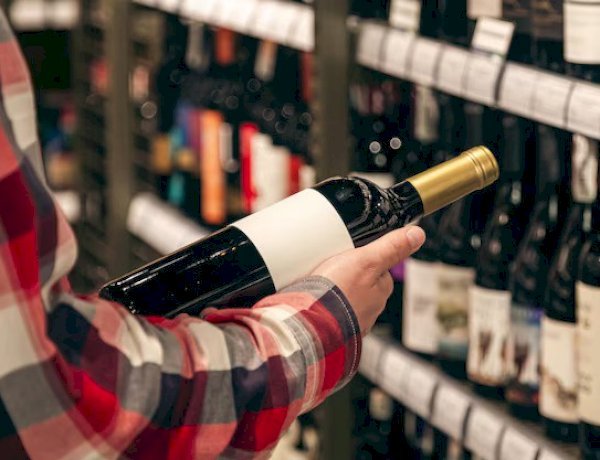A Complete Guide to Decorating Halloween Pumpkins in 2025
Learn how to decorate Halloween pumpkins with carving, painting, and no-carve ideas. Simple steps and traditional designs for indoor and outdoor seasonal displays.

Decorating Halloween pumpkins can be done through carving, painting, or no-carve methods. Real pumpkins offer a natural autumn look, while artificial pumpkins provide long-lasting indoor decoration. For a traditional Halloween atmosphere, carved jack-o’-lanterns, dark seasonal colors, and soft candle-style lighting create a warm and classic seasonal mood.
Decorating pumpkins has become a seasonal activity that many households look forward to each year. It is a simple way to bring the feeling of autumn into everyday spaces. Some people carve traditional faces, while others prefer painting or adding surface decorations that match their home style. Placing decorated pumpkins on steps, porches, tables, or shelves helps create a noticeable shift into the fall season. The materials are easy to find, and the process can be done alone or with others, making it a tradition that continues because of both its simplicity and its ability to change with personal taste.
The Cultural Background of Pumpkin Decorating

Image source: pinterest.com
The practice of decorating lantern-like vegetables began in Ireland many centuries ago. During the festival of Samhain, turnips were carved to create protective lights that would guide friendly spirits and discourage unwanted ones. When Irish settlers arrived in North America, they discovered pumpkins, which were larger, easier to carve, and more visually striking than turnips. This is how the pumpkin replaced the turnip and became central to what we now recognize as the Halloween jack-o’-lantern.
Over time, pumpkin decorating became more about creativity and seasonal atmosphere rather than spiritual meaning. Today, pumpkins represent autumn, harvest, and the shared tradition of preparing for seasonal change. They are used in homes, classrooms, festivals, and community events, serving as both decoration and cultural symbol.
Pumpkin Availability and Seasonal Interest

Image source: pinterest.com
Pumpkins are widely available in grocery stores, farms, and markets from late September through October. The United States produces over one billion pounds of pumpkins each year, according to the U.S. Department of Agriculture. Pumpkin patches and seasonal farm visits have also become fall traditions, especially for families.
Seasonal online searches reflect this popularity. Google Trends shows that search interest for “pumpkin decorating ideas” increases throughout September and reaches a peak in the final weeks of October. No-carve decorating ideas have also grown steadily more common, especially on image-based platforms like Pinterest, where users look for simple, creative, and visually appealing décor ideas.
Choosing Between Real and Artificial Pumpkins

Image source: pinterest.com
Real and artificial pumpkins are both used for decorating, and each has its purpose.
Real pumpkins offer natural texture, weight, and variation. Their irregular shapes and color differences add depth to seasonal displays. They are well suited for outdoor decorating and for traditional carving. Their main limitation is that they are perishable; carved pumpkins soften and decay after a few days, particularly in warm climates.
Artificial pumpkins, commonly made from foam or molded material, are lightweight and reusable. Their smooth surfaces make painting easier. They are especially practical indoors, where decorations are kept over several weeks. Artificial pumpkins maintain their shape and do not decay, but they do not provide the same natural appearance when used outdoors.
Many households combine both types: real pumpkins for outdoor displays and artificial pumpkins for indoor arrangements.
Preparing the Pumpkin

Image source: pinterest.com
A simple preparation process creates a better decorating result. Wash the pumpkin lightly to remove soil and debris, and allow it to dry completely. This helps paint and glue adhere smoothly. If carving, cover the work surface and have a waste bowl nearby for seeds and pulp. Acrylic paints are recommended for decorating because they dry evenly and bond well to the pumpkin surface. Paint markers are effective for outlines and smaller details.
If carving, it is safer to use pumpkin carving tools rather than kitchen knives. Carving tools are designed to move through pumpkin flesh smoothly and are easier to control.
No-Carve Pumpkin Decorating Methods

Image source: pinterest.com
No-carve decoration has become increasingly common because it is clean, safe, and long-lasting. The pumpkin remains intact, preventing moisture loss and rotting.
Painting is the most flexible no-carve method. Traditional Halloween palettes include orange, white, black, deep green, and burnt red. Painting allows for faces, silhouettes, characters, or patterns. Some people choose to paint pumpkins entirely in one color to match indoor décor. Using matte finishes can create a softer, seasonal look.
Fabric wrapping is another no-carve approach. A square of cotton, burlap, or lace can be placed over the pumpkin and tied around the stem. This method produces a rustic, autumn-inspired appearance, suitable for neutral or traditional interiors.
Surface decoration with decals or stickers provides neat, controlled results. These designs often include bat silhouettes, spider webs, ghost shapes, typography, and other seasonal symbols. This method is useful for group activities, classrooms, or events where multiple pumpkins are decorated at once.
Read Also: 20 Creative Ghost Halloween Decorations for a Spooky Home
Traditional Pumpkin Carving

Image source: pinterest.com
Carving pumpkins remains the most classic Halloween decorating technique. A carved pumpkin placed on a porch or near an entryway signals the holiday season and creates a welcoming focal point during the evening.
Carving begins by opening the pumpkin and removing the seeds and pulp. The thickness of the pumpkin walls influences how easily patterns can be cut. The design is usually drawn or outlined on the surface before carving. Traditional jack-o’-lantern faces, with triangle eyes and a wide smile, continue to be used because they are simple and expressive. More detailed carving may include sharp features, exaggerated expressions, or themed silhouettes.
A carved pumpkin is typically illuminated from within. LED candles are recommended because they are safer and do not produce heat. This lighting produces a soft, flickering glow that enhances the carved shapes and contributes to the atmosphere of Halloween.
Step-by-Step Painting Guide

Image source: pinterest.com
-
Clean and fully dry the pumpkin.
-
Apply a single-color base coat if desired.
-
Allow the base layer to dry before drawing or painting details.
-
Sketch the design lightly using pencil for guidance.
-
Use paint markers or small brushes to fill in the details slowly.
-
Let the pumpkin dry completely before moving it.
Step-by-Step Carving Guide

Image source: pinterest.com
-
Select a pumpkin that sits evenly.
-
Cut a clean circular opening around the stem or base.
-
Scoop out seeds and pulp until the inside is smooth.
-
Draw the design on the pumpkin’s surface.
-
Carve using slow, controlled movements.
-
Place an LED candle inside and test the visibility of the design.
Displaying Pumpkins for a Traditional Halloween Atmosphere

Image source: pinterest.com
The placement of pumpkins greatly affects the final look of a seasonal display. Outdoors, pumpkins are commonly arranged on porch steps, near doorways, at walkways, or in garden corners. Grouping pumpkins of various sizes creates depth. Many households use dried cornstalks, lanterns, wooden crates, or seasonal wreaths to strengthen the autumn atmosphere.
Indoors, pumpkins can be placed on fireplace mantels, entryway tables, windowsills, bookshelves, or as dining centerpieces. Soft lighting highlights shape and color, while warmer lighting contributes to seasonal mood. The display does not need to be large; even one or two thoughtfully placed pumpkins can reflect the season effectively.
How Long Decorated Pumpkins Last
Painted pumpkins generally last longer than carved pumpkins because the skin remains intact. When kept indoors, a painted pumpkin can last several weeks. Carved pumpkins typically last three to seven days, depending on temperature and humidity. Keeping carved pumpkins in cooler areas and applying a thin layer of petroleum jelly to exposed edges can help slow dryness.
Artificial pumpkins last indefinitely and can be stored and reused each year.
Conclusion
Frequently Asked Questions
1. When is the best time to decorate pumpkins for Halloween?
Most people begin decorating pumpkins in early to mid-October. If you plan to carve them, it is best to wait until the week of Halloween so they stay fresh. Painted pumpkins, however, can be done earlier because they last longer.
2. How long does a carved pumpkin usually last?
A carved pumpkin generally lasts between three and seven days, depending on temperature and humidity. Cooler conditions help carved pumpkins remain firm for a longer time.
3. How can I make a carved pumpkin last longer?
Keeping the pumpkin in a shaded or cool location slows drying. Applying a thin layer of petroleum jelly to the cut edges can help retain moisture. Using an LED candle instead of a real one also helps reduce heat exposure.
4. Can I decorate pumpkins without carving them?
Yes. Painting, fabric wrapping, and applying decals are all popular no-carve methods. These approaches are safer for children, less messy, and allow pumpkins to last several weeks.
5. Is it better to use real pumpkins or artificial ones for indoor decorating?
Artificial pumpkins are usually better for indoor décor because they do not decay and can be reused each year. Real pumpkins work well outdoors where natural texture adds to the seasonal atmosphere.
6. What type of paint works best on pumpkins?
Acrylic paint works best because it dries quickly and adheres well to pumpkin skin. Paint markers are helpful for fine details and outlines.
7. Can children participate in pumpkin decorating?
Yes. No-carve methods such as painting and stickers are safe and enjoyable for children. When carving is involved, adults should handle sharp tools and supervise the process closely.




























